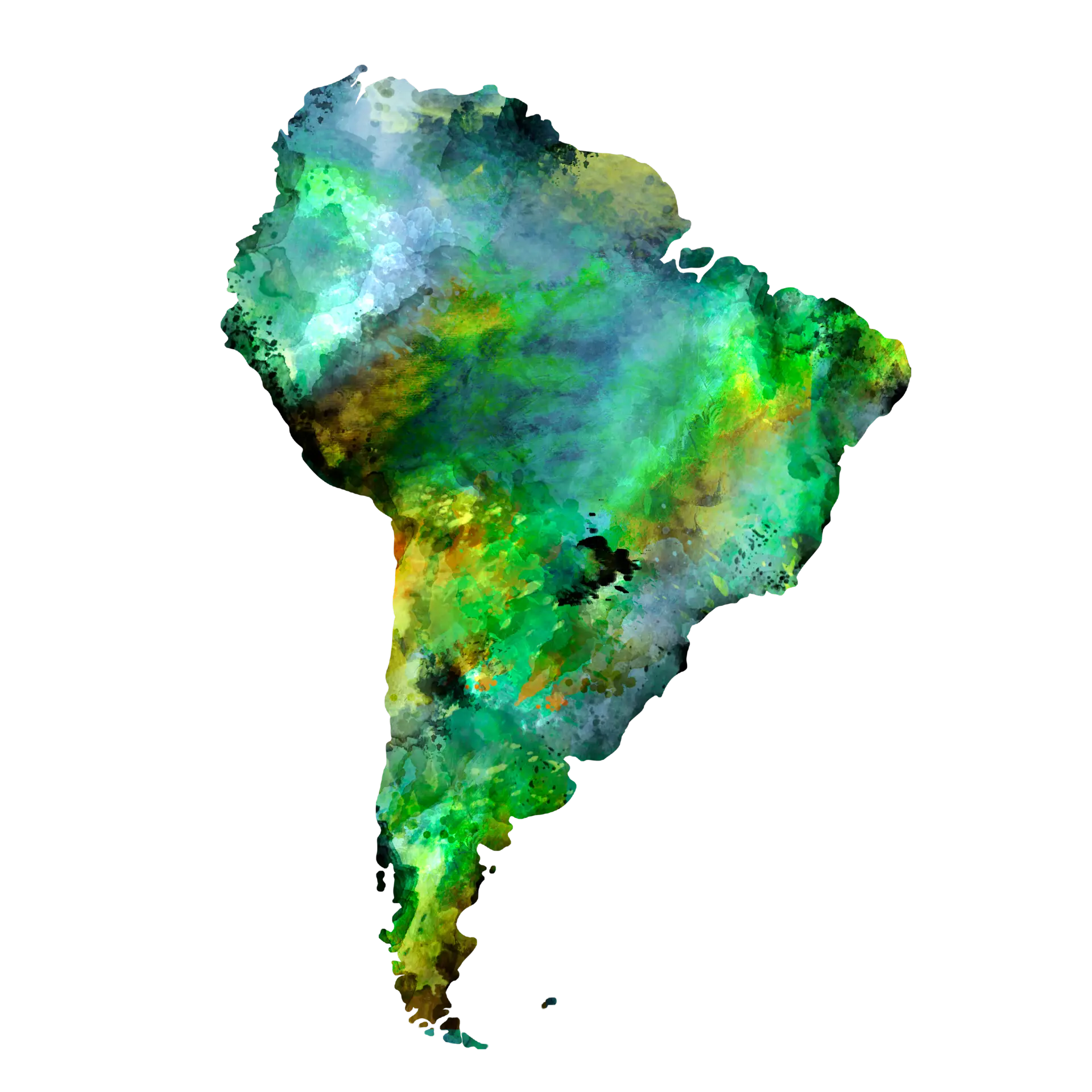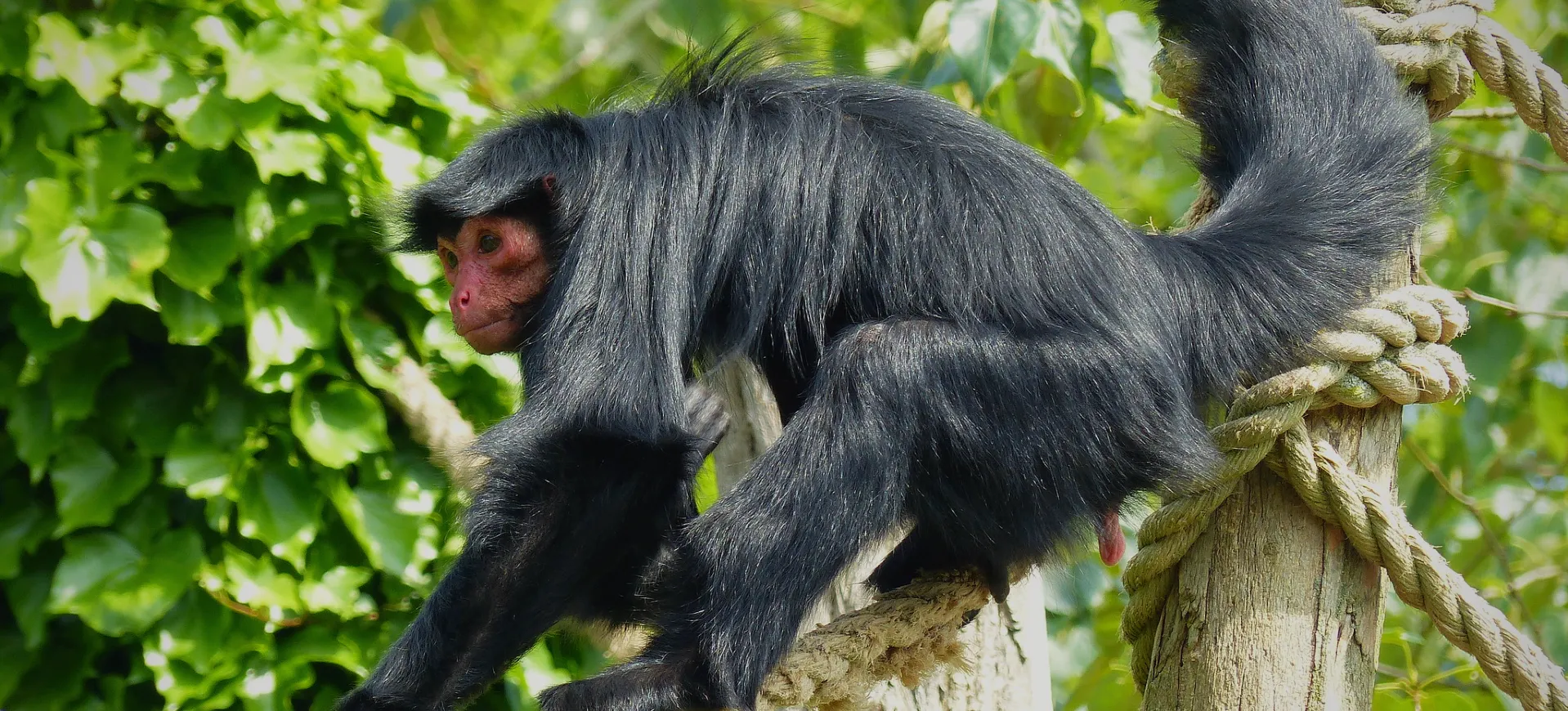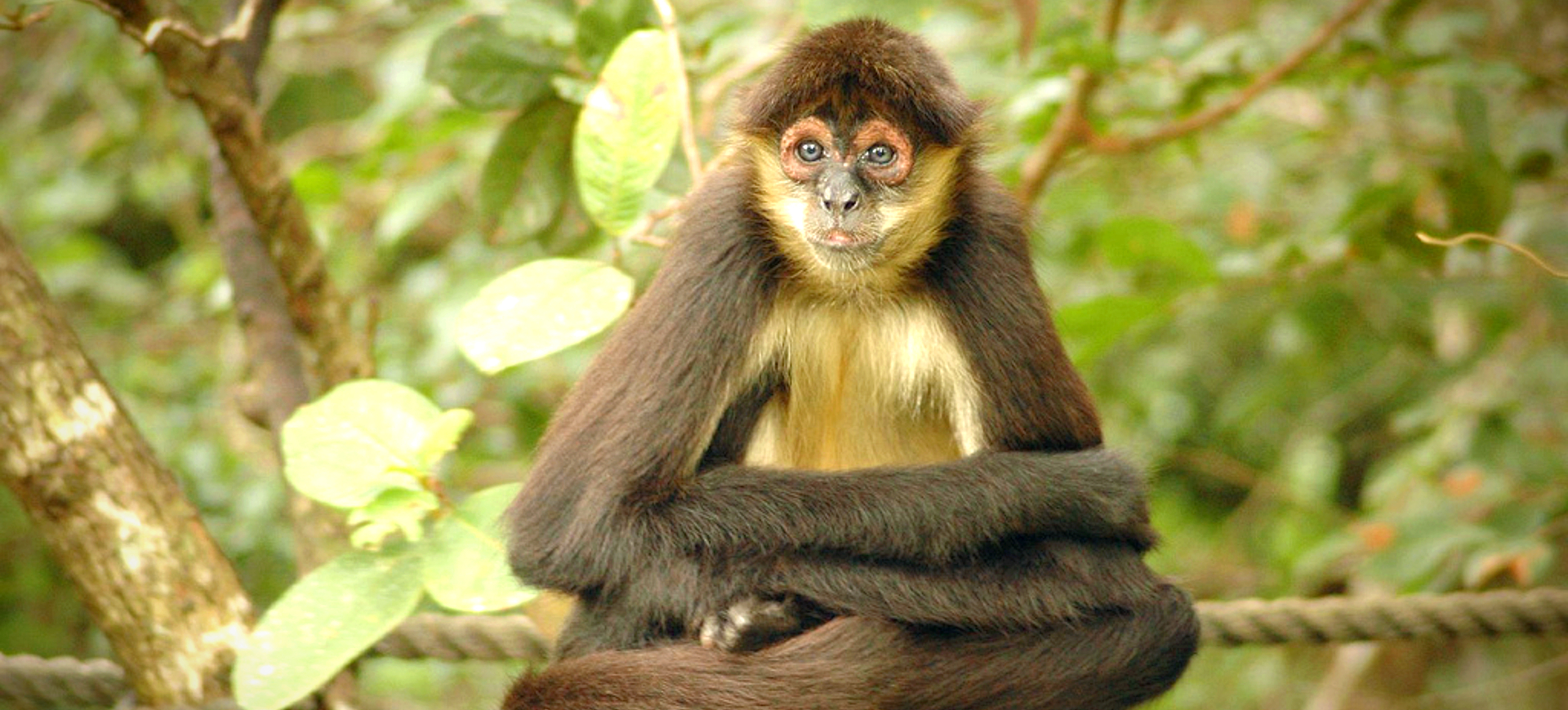Overview
The Black-and-Gold Howler Monkey, also known as the black howler or southern black howler, is a New World monkey species native to South America. It is known for its sexual dimorphism, with males exhibiting jet-black fur and females and juveniles covered in a golden or light tan coat. Renowned for their loud vocalizations, these monkeys possess a specialized hyoid bone that enables their calls to travel several kilometers through dense forests, serving as a means of communication and territorial defense. They are arboreal and folivorous primates, spending most of their time in the treetops of tropical and subtropical forests, where they feed on leaves, fruits, and flowers.
Black-and-gold howler monkeys are highly social animals, living in groups that typically consist of 5–12 individuals, including a dominant male, several females, and their offspring. Their slow metabolism allows them to thrive on a diet of leaves, which are low in nutrients, but this also means they spend a significant portion of their time resting or sleeping to conserve energy. As an important seed disperser, they contribute to the health and regeneration of their forest habitats. Although not inherently aggressive, these monkeys use loud howls to assert dominance and avoid physical confrontations with rival groups.
This species is classified as vulnerable due to habitat loss, hunting, and disease, particularly yellow fever, which has caused population declines in recent years. Conservation efforts are underway to protect their habitats and mitigate threats, but habitat fragmentation poses an ongoing challenge to their survival. Their distinctive calls and vibrant social behavior make them one of South America’s most recognizable and studied species of howler monkeys.
Current distribution:
The Black-and-Gold Howler Monkey is distributed across several South American countries, including Brazil, Argentina, Paraguay, and Bolivia. It is primarily found in the Pantanal wetlands and the Atlantic Forest, both biodiversity hotspots in Brazil. Argentina inhabits subtropical forests in the provinces of Corrientes, Chaco, and Misiones. The species is also present in Paraguay and eastern Bolivia, particularly in regions with intact forest cover near rivers and streams.
Populations are becoming increasingly fragmented due to deforestation, agricultural expansion, and urbanization, which have isolated groups in smaller forest patches. Although some protected areas and national parks support healthy populations, such as the Iguazú National Park in Argentina, these are insufficient to counteract habitat loss. The spread of diseases like yellow fever has also caused significant declines in certain regions. Conservation efforts focus on habitat restoration and establishing wildlife corridors to reconnect fragmented populations.
Physical Description:
The Black-and-Gold Howler Monkey exhibits sexual dimorphism in its fur coloration. Males are predominantly black with gold or buff patches, particularly on the sides and lower back. Females and juveniles are generally golden, buff, or reddish-brown. This distinction aids in individual recognition within the group.
They have large, strong limbs and a prehensile tail, essential for their arboreal lifestyle. The tail acts as a fifth limb, allowing them to grasp and hang from branches as they forage for food. Their faces are relatively bare with a short snout, and they have a well-developed jaw and throat sac that enable loud vocalizations. The males are generally larger and heavier than the females.

Lifespan: Wild: ~15 Years || Captivity: ~20 Years

Weight: Male: 15-22 lbs (6.8-10 kg) || Female: 9-14 lbs (4.1-6.4 kg)

Length: Male: 20-26 in (51-66 cm) || Female: 18-24 in (46-61 cm)

Height: Male: 30-36 in (76-91 cm) || Female: 22-29 in (55-73 cm)

Top Speed: 18 mph (28 km/h)
Characteristic:
Native Habitat:
The Black-and-Gold Howler Monkey is native to the forests of central South America, including parts of Brazil, Paraguay, Argentina, and Bolivia. Its preferred habitats include semi-deciduous, evergreen, and gallery forests with occasional appearances in more typical rainforests. It is particularly associated with areas along rivers and streams.
These monkeys are well-adapted to life in the trees, rarely descending to the ground. Their habitat provides the necessary food sources and protection from ground-based predators. Preserving their forest habitats is critical for survival, especially in regions where deforestation is a significant threat.
Biomes:
Biogeographical Realms:
Continents:
Diet:
Diet & Feeding Habits:
The Black-and-Gold Howler Monkey’s diet is primarily folivorous, consisting largely of leaves. They prefer young, tender leaves, which are easier to digest and more nutritious than mature leaves. Their multi-chambered stomachs are adapted to ferment this tough plant material, extracting maximum nutrition.
In addition to leaves, they consume fruits, flowers, and buds when available, particularly during the wet season. The consumption of fruit helps in seed dispersal, playing a crucial role in the health of their forest ecosystems. Their slow and deliberate movements reflect their energy-conserving diet, as leaves provide less energy than fruits or insects.
Mating Behavior:
Mating Description:
The mating system of the Black-and-Gold Howler Monkey is polygynous, with dominant males mating with multiple females in the group. Males compete for dominance, with the alpha male having primary access to females for mating. Courtship behavior includes vocalizations, physical displays, and grooming.
Females typically give birth to a single offspring after a gestation period of about six months. The young are cared for primarily by the mother, with some alloparental care observed within the group. The interbirth interval for females is generally around 20 months. Parental care is crucial for the young’s survival, as they depend on their mothers for nourishment and protection.
Reproduction Season:
Birth Type:
Pregnancy Duration:
Female Name:
Male Name:
Baby Name:
Social Structure Description:
The Black-and-Gold Howler Monkey lives in social groups typically consisting of one to three males, multiple females, and their offspring. Group sizes can vary but usually range from 6 to 15 individuals. These groups are characterized by a dominance hierarchy, with a single alpha male often leading the group.
Social interactions within the group include grooming, vocal communication, and play behavior among the young. The howler monkeys maintain a cohesive group structure through vocalizations and social bonding activities. Territorial behavior is common, with groups defending their home range against other groups through vocal displays and physical posturing.
Groups:
Conservation Status:
Population Trend:
The overall population of the Black-and-Gold Howler Monkey is considered stable, though some localized populations may be declining due to habitat loss. The monkey is adaptable to various forested environments, which has helped maintain its numbers. However, continued deforestation and habitat fragmentation in certain areas cause concern.
Their populations tend to be healthier and more stable in areas where their habitat is protected, such as national parks and reserves. The species is widely recognized and often a subject of ecotourism, which can contribute to conservation efforts and local awareness.
Population Threats:
The primary threat to the Black-and-Gold Howler Monkey is habitat destruction and fragmentation, primarily due to deforestation for agriculture, logging, and urban development. This loss of habitat not only reduces their living space but impacts their food sources and breeding sites. Additionally, they face threats from hunting and capture for the illegal pet trade in some areas.
Climate change is an emerging threat, potentially altering their habitat and the ecological dynamics of the forests they inhabit. Temperature and rainfall patterns can affect the availability of food sources and suitable habitats.
Conservation Efforts:
Conservation efforts for the Black-and-Gold Howler Monkey include habitat protection and establishing protected areas. Efforts are being made to preserve large tracts of forest, which are crucial for the survival of this species. Environmental laws and regulations in various countries help protect their habitats and control deforestation.
Education and community involvement are key aspects of conservation strategies. Raising awareness about the importance of forest conservation and the role of howler monkeys in the ecosystem can help garner support for conservation initiatives. Research and monitoring of populations are essential for understanding their ecology and informing conservation actions.
Additional Resources:
Fun Facts
- The Black-and-Gold Howler Monkey’s howl is one of the loudest calls produced by any land animal and can be heard up to three miles away.
- They have one of New World monkey’s most specialized and least varied diets, primarily eating leaves.
- Their large throat sac not only aids in vocalization but also amplifies their howls, which serve as territorial calls and to communicate within the group.
- The coloration of the males is thought to play a role in attracting females and intimidating rival males.
- These monkeys play a crucial role in seed dispersal, aiding in the maintenance and regeneration of their forest habitats.
- Howler monkeys are among the few primates with a prehensile tail, which they use as an extra limb for gripping branches.
- Despite their howling and intimidating appearance, they are generally peaceful and spend much of their time resting.
- Infants are born with a golden color, regardless of their sex, and cling to their mothers for the first few months of life.
- The Black-and-Gold Howler Monkey’s howl is one of the loudest calls in the animal kingdom and can be heard from up to three miles away.
- These monkeys are among the few species where the coloration of males differs significantly from that of females and juveniles.










